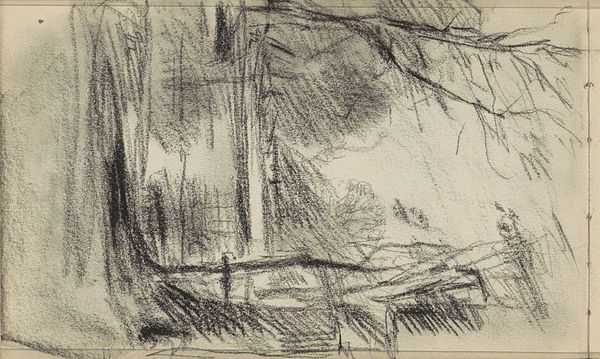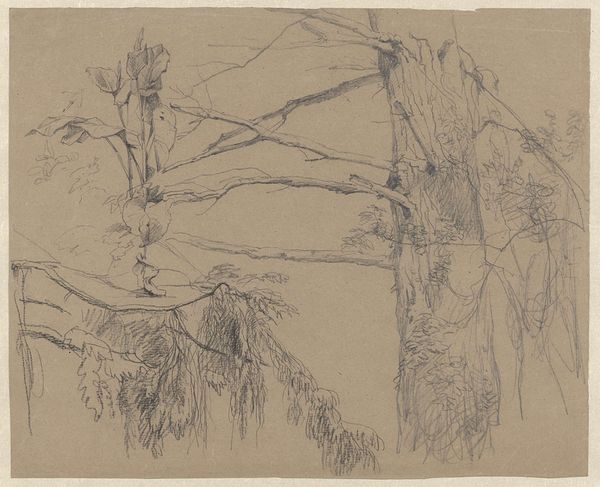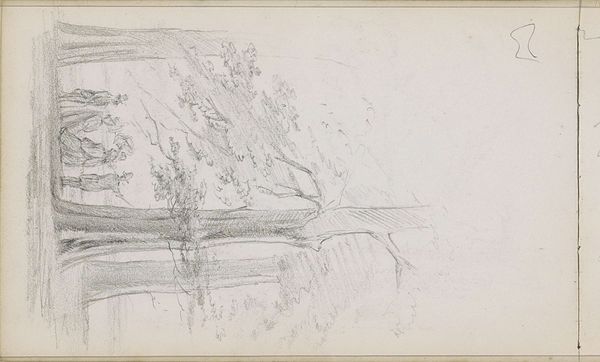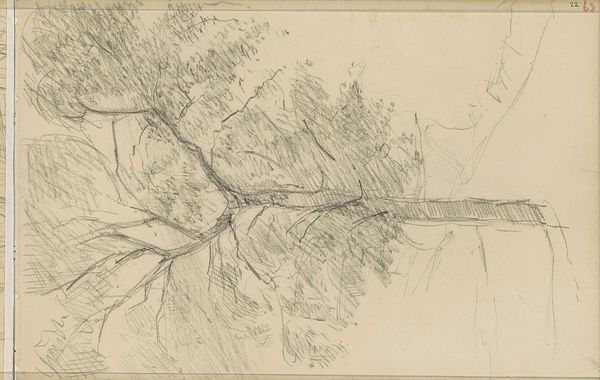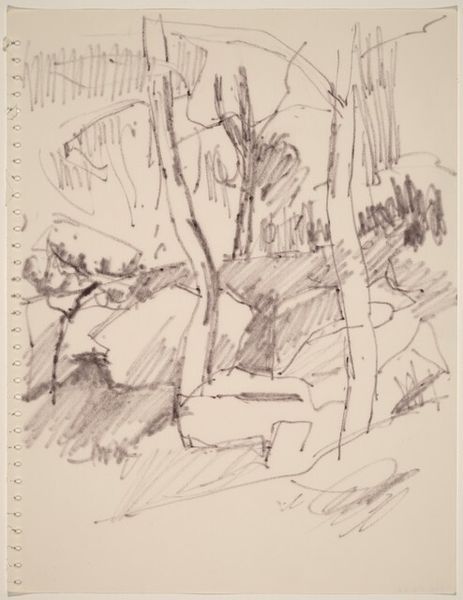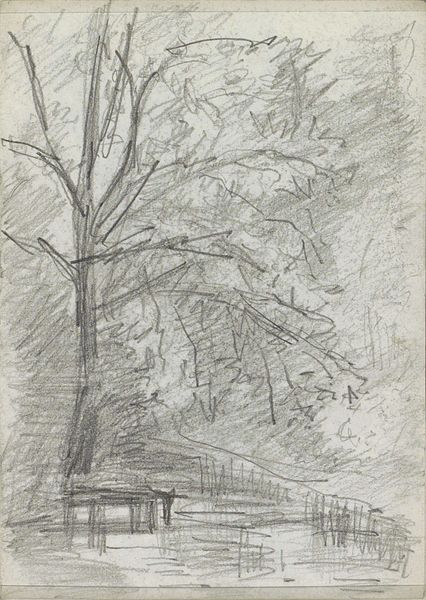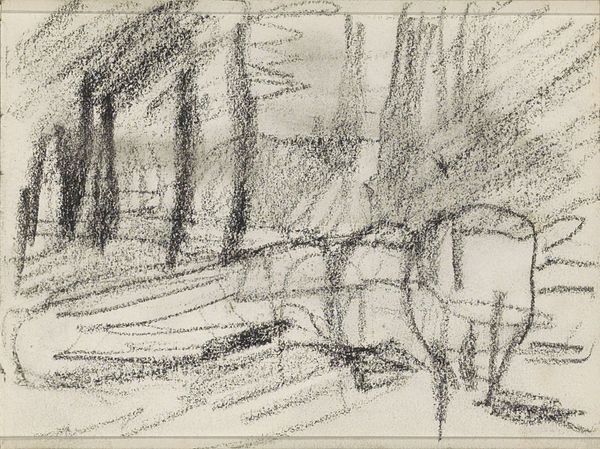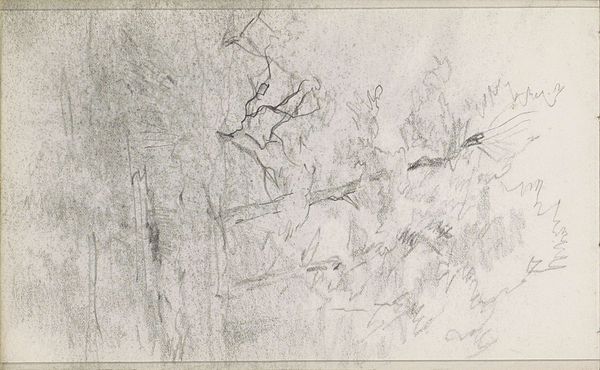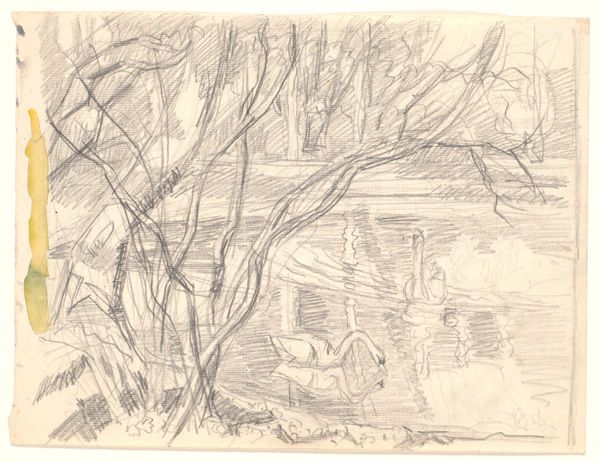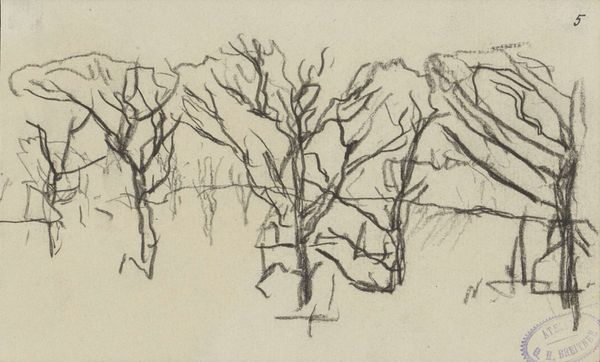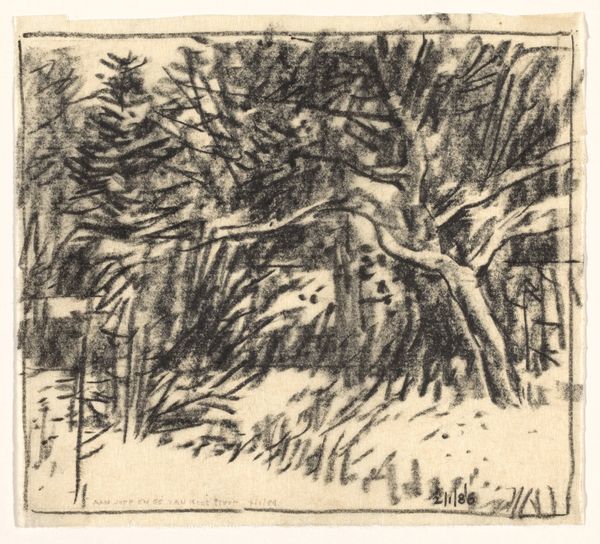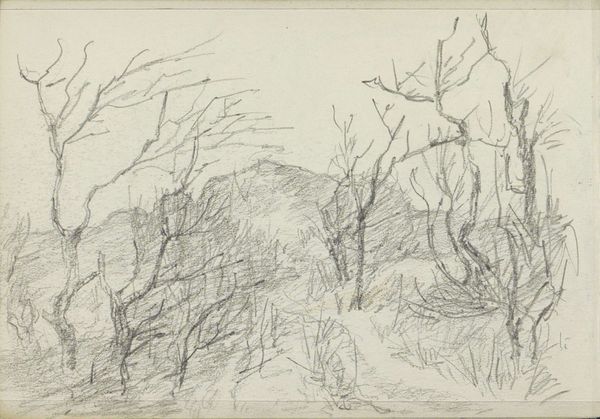
drawing, paper, pencil
#
drawing
#
impressionism
#
pencil sketch
#
landscape
#
paper
#
pencil
Copyright: Rijks Museum: Open Domain
Curator: Up next we have "Landschap met bomen", or "Landscape with Trees," a pencil drawing on paper by Jozef Israëls, dating sometime between 1834 and 1911, currently residing here at the Rijksmuseum. Editor: My initial thought? Intimate. Despite its landscape subject, there’s something almost portrait-like about the close-up perspective and focus on texture over sweeping vista. The artist emphasizes the materiality of the graphite itself. Curator: Absolutely, and it’s important to note Israëls' prominent role in the Hague School, a Dutch art movement heavily influenced by the Barbizon School in France. They focused on realism, depicting everyday scenes and rural landscapes. You see the shift towards art portraying the working classes here. Editor: Right. The roughness of the pencil strokes contributes to the earthy quality. You can feel the hand of the artist and the humble tools. How does this relate to its contemporary audience? Was it aiming for bourgeois buyers and what were they looking for? Curator: In Israëls' time, art collecting and patronage were growing. This sketch offers us insight into Israëls’ methods. He certainly gained acclaim for works showcasing the lives of fishermen and peasant families; this one shows nature through his working eye. It reflects both an academic tradition and an accessible, empathetic engagement with Dutch landscape. Editor: And it also makes me consider the value of this preliminary work. Was it just a study for something larger or a valuable piece by itself? Were there expectations for how artwork should reflect craftsmanship through medium in that era? I see value in its own materiality, not in an inherent form of skill. Curator: The reception to Israëls and his peers helped shaped public perception towards landscapes, moving away from pure aesthetic pleasure and adding socio-cultural awareness of nature’s significance in national identity. Editor: Considering that context does help reframe my initial read. It speaks not only to nature itself, but also to an evolving definition of 'Dutch-ness,' especially through a materialist lens. Curator: Yes, precisely. This humble drawing then reveals a much larger conversation about art's role within the broader society. Editor: And in thinking through materiality and social context, one develops a richer relationship with this particular work. Thanks!
Comments
No comments
Be the first to comment and join the conversation on the ultimate creative platform.
